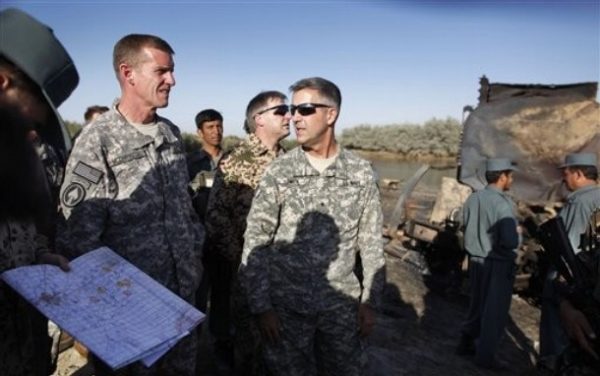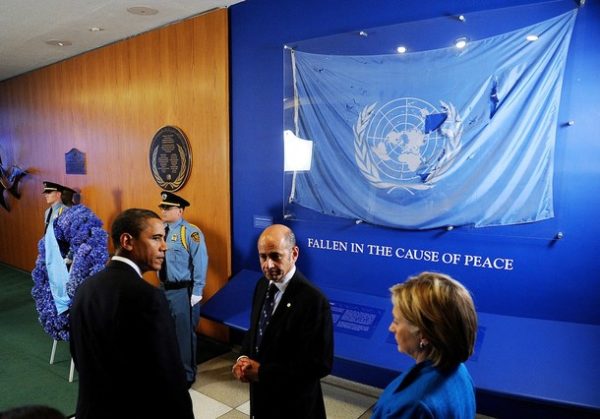Notes
Afghan Strategy: Hell If I Know

It’s one of those images — this one released almost three weeks ago — that picks up more relevance by the day.
In the photo, we see U.S. commander in Afghanistan, Stanley McChrystal, alongside Rear Admiral Gregory J. Smith, NATO’s director of communications, trying to understand (while dramatizing that process to the media) how a U.S. airstrike managed to kill up to 70 civilians outside Kunduz earlier this month.
While Stanley and Greg are focused on why an attack on a few Taliban-hijacked fuel tankers went so wrong, however, the more enduring feature here involves the soldier on the left. In the larger sense — especially now that Stanley has formally and quite publicly called for a troop surge, and the Commander-in-Chief has just as publicly aired his second thoughts — the map (as well as McChrystal’s expression) comes to symbolize how dislocated the mission is overall.
(image: Anja Niedringhaus/A.P. outside Kunduz, Afghanistan, Saturday, Sept. 5, 2009)


Reactions
Comments Powered by Disqus